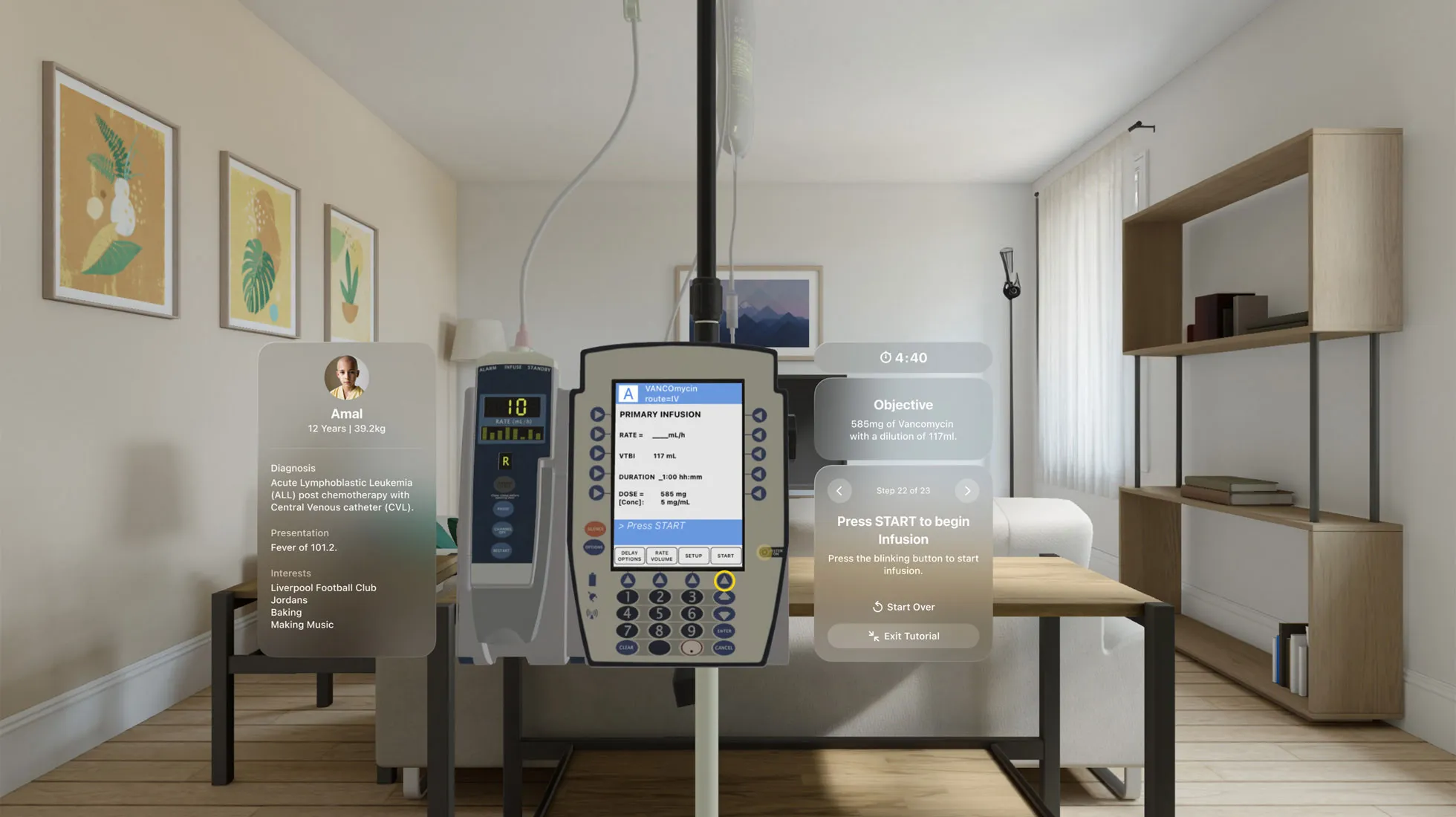From cluttered operating rooms to cadaver-free training, Apple’s $3,500 spatial computing headset is transforming healthcare—one virtual screen at a time.
Key Points at a Glance:
- Surgeons at UC San Diego Health have performed 50+ live surgeries using Apple Vision Pro, replacing physical monitors with floating displays.
- Digital twins in Vision Pro reduce reliance on cadavers, which cost up to $10,000 per body plus storage fees.
- Ergonomic spatial displays cut neck strain for surgeons, who often endure 12-hour procedures.
- Apps like CyranoHealth train nurses on infusion pumps via immersive simulations, slashing onboarding time.
When Apple’s Vision Pro launched in 2024, critics balked at its $3,500 price tag. But for Dr. Ryan Broderick, a surgeon at UC San Diego Health, the headset is a bargain. “A single medical cadaver costs more than this device,” he says. “And cadavers don’t let you rehearse a procedure infinitely.”
Broderick is among the first to deploy Vision Pro in live surgeries. By replacing the operating room’s labyrinth of monitors with spatial displays, he’s decluttering workspaces and reducing physical strain. “Surgeons juggle five screens while dodging oxygen tanks and colleagues,” he explains. “Now, vital stats float exactly where we need them.”
Surgery Without Screens
Traditional ORs force surgeons to crane their necks toward static monitors, leading to chronic injuries. Vision Pro changes that. During a recent laparoscopic procedure, Broderick and his team wore headsets that projected real-time patient data, imaging, and instrument feeds into their field of view. “The display follows your gaze,” he says. “No more twisting to check a screen across the room.”
The results? Faster decisions, fewer errors, and a 30% drop in reported muscle fatigue during marathon surgeries.
Training Tomorrow’s Medics
At Boston Children’s Hospital, nurses use Vision Pro to master infusion pumps via the CyranoHealth app. Trainees interact with 3D models of equipment, receiving instant feedback on technique. “It’s like flight simulators for healthcare,” says Susan Prescott, Apple’s VP of Developer Relations.
Meanwhile, digital twins—hyper-detailed 3D anatomy models—are phasing out cadavers in surgical training. Students can “dissect” virtual organs, track blood flow in real time, and repeat procedures without costly physical specimens.
The AI Operating Room
Post-surgery reviews, once a tedious chore, now leverage Vision Pro’s AI. Dr. Tommy Korn, an ophthalmologist at Sharp HealthCare, uses AI to analyze recordings of his surgeries. “It flags delays—like taking too long to suture—and overlays vital signs for context,” he says. Trainees rewatch procedures with annotations, turning 12-minute reviews into 2-minute insights.
Patient Buy-In: No More “Alien Tech”
Early adopters worried patients would balk at surgeons wearing headsets. Instead, recognition bred trust. “People know Vision Pro from Apple Stores,” says Broderick. “It’s less intimidating than a room full of robots.” Only one patient opted out, citing general anxiety.
The Roadmap: Mentors in Your Eyes
Future updates could let surgeons livestream their perspective to mentors worldwide. “Stuck mid-procedure? A specialist could guide you through the headset,” Broderick envisions. Other plans include overlaying CT scans onto patients’ bodies, creating “X-ray vision” for precision incisions.
Apple, meanwhile, is accelerating updates based on medical feedback. Three OS upgrades in 12 months added features like multi-user annotations and HIPAA-compliant data streaming.
